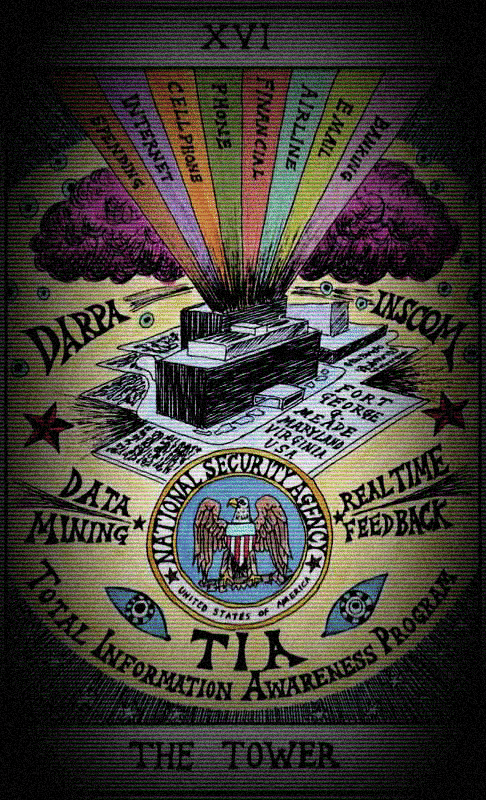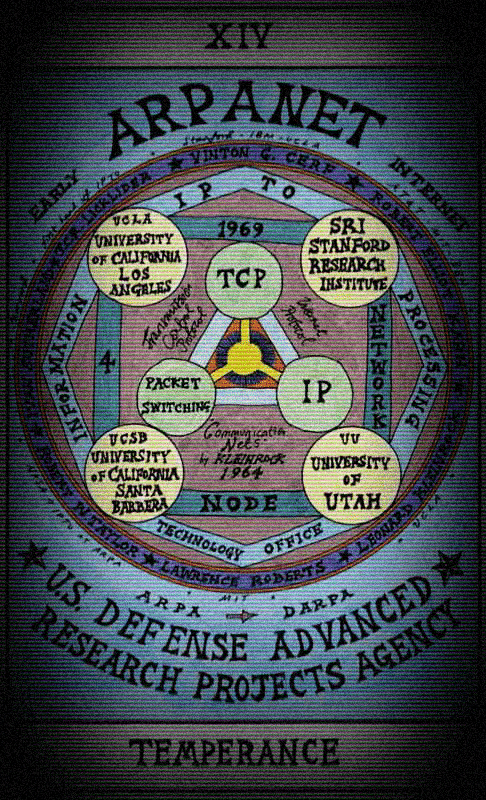“From the beginning this strange little creature, that lived in a society under complicated laws and executed prodigious labors in the darkness, attracted the notice of men. Aristotle, Cato, Varro, Pliny, Columella, Palladius all studied the bees; to say nothing of Aristomachus, who, according to Cicero, watched them for fifty-eight years, and of Phyliscus, whose writings are lost.”
—La vie des abeilles By Maurice Maeterlinck
Cyberspace is psychic space. The ecology of human souls made visible by technology and globalized. The World Wide Web is the domain of Hermes, god of cryptography and signal. Sensors, mobile phones, and innumerable data capture devices provide the eyes and mouths of a world-spanning living organism. An electrophysical assemblage of synchronized hallucinations; a drug for the numbing of psychic death.
But what is it? How can we truly see something so massive and massless? Where are the outlines of this invisible Network Leviathan?
Man’s greatest proof of divine is within his own mortal frame and it is no different with this new emergent superorganism. Lo, you are the cyborg alchemist, you are the man in the mechanical Turk. You are the AI.
The Encrypted God
It really is just a matter of knowing the "keywords"— like a magic spell. Every Enochian cipher reveals a layer of the terrain. They don't call it "an emergent entity transforming humanity into neutered golems and integrating their flesh into a gleaming black hive", they call it something else. They call it “data mining”, “modeling interactions”, “cyber physical systems”, “digital twinning”, “reinforcement learning”. They call it “a virtual environment for studying collective human behavior from a swarm intelligence perspective”—
Many existing video games such as Minecraft can also be used and modified to conduct controlled experiments (Nebel et al. 2016). For example, Minecraft is well suited to studying a joint construction task. Data collected during these tasks can be used to study how the interdependence of sub-tasks impacts collaboration, performance, and learning among the participants (Nebel et al. 2017). Other approaches have studied how participants achieve coordinated play on tasks that are specific to video games such as World of Warcraft, using audio and video recordings of players’ screens (Williams and Kirschner 2012). Games like World of Warcraft have also shown the potential to study collective behavior under external events such as pandemics (Lofgren and Fefferman 2007). Within the scope of existing video games, there is emerging research that builds computational models of players, characterizing the relationships between player inputs and outputs during a game. Players have a large range of possible actions at each particular moment, such that modeling the rich interactions between players and game is considered “a holy grail of game design and development” (Yannakakis and Togelius 2018).
HuGoS: a virtual environment for studying collective human behavior from a swarm intelligence perspective Nicolas Coucke, 20
Recently, DARPA gave a $316,000 federal grant to the University at Buffalo Artificial Intelligence Institute to study gamers' brain waves and eye movements. The aim was to train the “swarm intelligence” which governs autonomous air and ground robots. Such experiments are reported in the media because the researchers will be developing their own games, the participants will be compensated for their precious data. There is a semi-transparent trollface leering behind such articles, the perversely ludicrous suggestion that the “target rich” environments of extant games, bubbling with the data of a billion users “in the wild”, a treasure beyond measure to cyberneticians and AI developers, would be left unmolested.
Of course, we do have evidence that such molestation has occurred—





